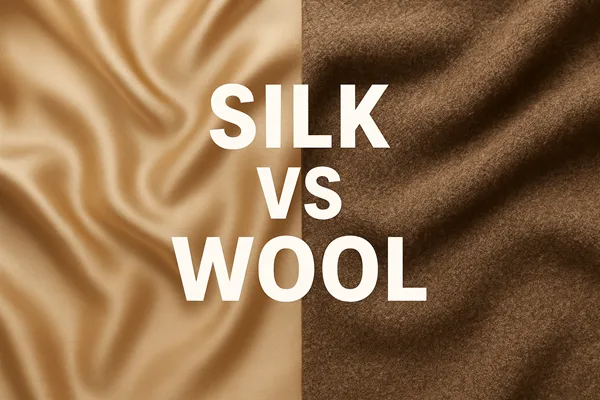Differences Between Fiber, Yarn and Fabric
Basic textile has 3 forms: fiber, Yarn, and Fabric. One is the raw material of another. But what are the technical differences among them? In this article, please find the details on the Differences Between Fiber, Yarn, and Fabric.

10 Key Differences Between Fiber, Yarn, and Fabric
Explore 10 basic and technical Differences Between Fiber, Yarn, and Fabric:
| Topics | Fiber | Yarn | Fabric |
| Definition | A textile fiber is a fine, hair-like material that can be spun into yarn and made into fabric. | Continuous strands of fibers, either natural or synthetic, twisted or spun together | Flexible material made by interlacing yarns, threads, or fibers |
| Composition | Made from natural polymers (cellulose, protein) or synthetic polymers (polyester, nylon, acrylic) | Various fibers, for example cotton, wool, silk, polyester, nylon, acrylic etc. are used | Comprises one or more yarns, that may be of different fibers or the same |
| Form | Usually long, thin filaments or short staple fibers | Often comes as long and continuous strands or threads | Commonly found in four forms like woven, knitted, non-woven, or braided |
| Size | Measured in microns or denier; varies from very fine (silk) to coarse (jute). | Thickness or diameter varies depending on the type of yarn and its intended use | Thickness of fabric depends on the no. of yarns per inch or the density of interlace in woven fabric or stitch length of loops in knitted fabric. |
| Structure | Internal arrangement of molecules—amorphous or crystalline—affects strength, absorbency, and elasticity. | Yarn can be spun in different twill direction like S or Z direction to achieve desired strength and characteristics | Fabric structure depends on the method of interlacing or method of knitting. For example, plain weave, satin weave, twill weave or single jersey or double jersey knit |
| Flexibility | Ability to bend without breaking; essential for spinning and fabric formation. | Relatively flexible and can be easily manipulated or shaped | Fabric can have varying degrees of flexibility, ranging from stiff and structured to soft and drapable fabric |
| Function | Provides strength, comfort, insulation, absorbency, stretch, or durability depending on the fiber type. | Used for creating fabrics through weaving, knitting, or other fabric production processes | Clothing, apparel, upholstery, bedding, or industrial textiles are made from fabric |
| Texture | Surface feel of the fiber—smooth, rough, silky, coarse. | Yarns can have different textures, including smooth, coarse, fuzzy, or textured, depending on the fiber and yarn manufacturing process | Fabric texture is determined by the combination of yarns used and the type of weave or knit pattern |
| Coloring | Fibers can be naturally colored or dyed using various dye classes depending on the fiber chemistry. | Dyeing is carried out both before or after fabric production | The color and pattern of the fabric depend on the yarns used, the dyeing or printing methods employed, and the fabric structure |
| Examples | Cotton fiber, wool, silk, flax, polyester, nylon, acrylic, viscose fiber. | Spun cotton yarn, wool yarn, nylon yarn, Core spun yarn, ring yarn, rotor yarn, wrap yarn, air-jet yarn or polyester filament yarn | Denim, satin, chiffon, fleece, flannel, velvet, twill or jersey fabric |
Merging fiber, yarn, and fabric in the textile, they still have distinctly different functions. Fiber is the unprocessed, minuscule piece that determines the majority of the material’s innate properties and limitations. Yarn is just the continuum of those fibers in a usable form. Fabric is the surface that we select, wear, and transform into goods. Once you see them in sequence, the entire chain becomes clear. Switching out the fiber means changing the yarn. Switching out the yarn means changing the fabric. It is that direct and simple change that is the force behind the whole textile industry.



